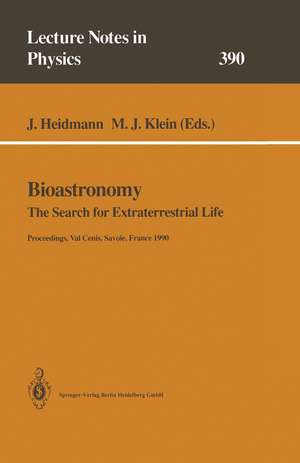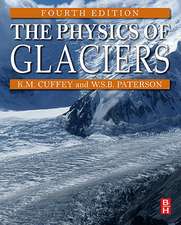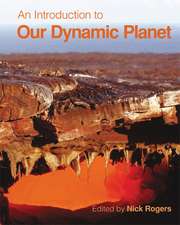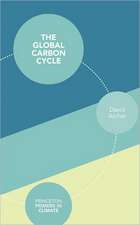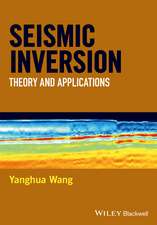Bioastronomy: The Search for Extraterrestrial Life — The Exploration Broadens: Lecture Notes in Physics, cartea 390
Editat de Jean Heidmann, Michael J. Kleinen Limba Engleză Paperback – 23 aug 2014
Din seria Lecture Notes in Physics
- 19%
 Preț: 424.00 lei
Preț: 424.00 lei - 17%
 Preț: 360.73 lei
Preț: 360.73 lei -
 Preț: 429.22 lei
Preț: 429.22 lei - 17%
 Preț: 427.62 lei
Preț: 427.62 lei - 17%
 Preț: 460.26 lei
Preț: 460.26 lei -
 Preț: 427.96 lei
Preț: 427.96 lei -
 Preț: 481.93 lei
Preț: 481.93 lei - 17%
 Preț: 494.66 lei
Preț: 494.66 lei -
 Preț: 281.90 lei
Preț: 281.90 lei - 17%
 Preț: 493.20 lei
Preț: 493.20 lei - 17%
 Preț: 426.72 lei
Preț: 426.72 lei -
 Preț: 365.15 lei
Preț: 365.15 lei -
 Preț: 374.52 lei
Preț: 374.52 lei -
 Preț: 407.98 lei
Preț: 407.98 lei - 20%
 Preț: 428.13 lei
Preț: 428.13 lei -
 Preț: 263.30 lei
Preț: 263.30 lei - 15%
 Preț: 593.73 lei
Preț: 593.73 lei - 15%
 Preț: 528.13 lei
Preț: 528.13 lei -
 Preț: 493.12 lei
Preț: 493.12 lei - 17%
 Preț: 425.68 lei
Preț: 425.68 lei -
 Preț: 280.65 lei
Preț: 280.65 lei -
 Preț: 163.41 lei
Preț: 163.41 lei - 18%
 Preț: 726.59 lei
Preț: 726.59 lei -
 Preț: 394.84 lei
Preț: 394.84 lei - 15%
 Preț: 709.63 lei
Preț: 709.63 lei - 15%
 Preț: 623.90 lei
Preț: 623.90 lei - 20%
 Preț: 476.93 lei
Preț: 476.93 lei - 15%
 Preț: 428.05 lei
Preț: 428.05 lei -
 Preț: 342.78 lei
Preț: 342.78 lei - 18%
 Preț: 851.93 lei
Preț: 851.93 lei -
 Preț: 346.61 lei
Preț: 346.61 lei -
 Preț: 391.57 lei
Preț: 391.57 lei - 15%
 Preț: 633.16 lei
Preț: 633.16 lei -
 Preț: 451.71 lei
Preț: 451.71 lei - 5%
 Preț: 1497.80 lei
Preț: 1497.80 lei -
 Preț: 374.85 lei
Preț: 374.85 lei -
 Preț: 380.07 lei
Preț: 380.07 lei - 15%
 Preț: 516.14 lei
Preț: 516.14 lei - 15%
 Preț: 583.78 lei
Preț: 583.78 lei - 15%
 Preț: 508.60 lei
Preț: 508.60 lei -
 Preț: 469.73 lei
Preț: 469.73 lei -
 Preț: 388.90 lei
Preț: 388.90 lei - 15%
 Preț: 500.24 lei
Preț: 500.24 lei -
 Preț: 386.52 lei
Preț: 386.52 lei - 15%
 Preț: 472.88 lei
Preț: 472.88 lei -
 Preț: 424.27 lei
Preț: 424.27 lei -
 Preț: 380.07 lei
Preț: 380.07 lei - 15%
 Preț: 500.01 lei
Preț: 500.01 lei
Preț: 650.04 lei
Preț vechi: 764.76 lei
-15% Nou
Puncte Express: 975
Preț estimativ în valută:
124.40€ • 129.40$ • 102.70£
124.40€ • 129.40$ • 102.70£
Carte tipărită la comandă
Livrare economică 15-29 aprilie
Preluare comenzi: 021 569.72.76
Specificații
ISBN-13: 9783662138199
ISBN-10: 3662138190
Pagini: 432
Ilustrații: XVII, 413 p. 30 illus.
Dimensiuni: 170 x 244 x 23 mm
Greutate: 0.69 kg
Ediția:Softcover reprint of the original 1st ed. 1991
Editura: Springer Berlin, Heidelberg
Colecția Springer
Seria Lecture Notes in Physics
Locul publicării:Berlin, Heidelberg, Germany
ISBN-10: 3662138190
Pagini: 432
Ilustrații: XVII, 413 p. 30 illus.
Dimensiuni: 170 x 244 x 23 mm
Greutate: 0.69 kg
Ediția:Softcover reprint of the original 1st ed. 1991
Editura: Springer Berlin, Heidelberg
Colecția Springer
Seria Lecture Notes in Physics
Locul publicării:Berlin, Heidelberg, Germany
Public țintă
ResearchCuprins
Opening remarks.- The creation of free energy.- Particulate disks around main sequence stars.- Bursts of star formation in the local galactic disk and their implications for the origin and evolution of life around the sun and nearby stars.- Testing theories of star formation.- Towards an estimate of the fration of stars with planets from velocities of high precision.- On the feasibility of extra-solar planetary detection at very low ratio frequencies.- The ESO microvariability Key Program and the detection of extrasolar planets and brown dwarfs.- A proposal for the search of extrasolar planets by occultation.- Near-term prospects for extra-solar planet detection: The astrometric imaging telescope.- A search for T-Tauri stars based on the IRAS Point Source Catalog.- How many single stars among solar-type stars?.- Habitable planetary orbits around ? centauri and other binaries.- The search for protostars.- The habitability of Mars-like planets around main sequence stars.- Planetary accretion debris and IR excesses in open stellar clusters.- Lithium abundances as a probe of the early evolution of solar-type stars.- Low-amplitude stellar velocity variations: Other possibilities.- Some recent developments in interstellar chemistry.- The formation of long chains of carbon atoms in space.- Hydrogen cyanide polymerization: A preferred cosmochemical pathway.- PAHs: Very abundant organic molecules in the interstellar medium.- Primitive evolution: Early information transfer and catalysis by purines.- The search for H2O in extraterrestrial environments.- Self-assembly properties of primitive organic compounds.- Cometary studies: Bioastronomical perspectives.- Origin of the biosphere of the earth.- Carbon-rich micrometeorites and prebiotic synthesis.- Titan's atmosphere probed bystellar occultation.- Study of transmitted light through Titans atmosphere.- UV radiation fields in dense clouds: Photochemical effects.- Prebiotic chemistry in planetary environments.- Terrestrial accretion of prebiotic volatiles and organic molecules during the heavy bombardment.- Geophysiology and habitable zones around sun-like stars.- Exobiological habitats: An overview.- Habitable zones for earth-like planets around main sequence stars.- Titan's atmosphere from voyager infrared observations: Parallels and differences with the primitive earth.- Liquid water and life on early mars.- New interpretation of crustal extension evidences on mars.- Martian paleohydrology and its implications for exobiology science.- Boundaries of the earth's biosphere.- The impact of technology on SETI.- RFI surveys at selected radio observatories.- A 1 Hz resolution RFI survey: Preliminary results.- The SERENDIP II SETI project: Observations and RFI analysis.- SETI: On the telescope and on the drawing board.- Project of ETI signal search at the wavelength 1.47 mm.- A SETI search technique: Monitor stars to which we have sent signals.- Radio search for alien space probes.- Karhunen-Loève versus Fourier transform for SETI.- On the strategy of SETI.- Pan-Galactic puise periods and the pulse window for SETI.- Cosmic background radiation limits for SETI.- VLBI and interstellar scattering tests for SETI signals.- A test for the interstellar contact channel hypothesis in SETI.- The SETI program of the Planetary Society.- Trying to do science using high spectral resolution SETI prototypes.- The summit of the CBR at mm wavelengths and other queries.- The potential contribution of the northern cross radiotelescope to the SETI program.- A proposal for a SETI global network.- A search for Dysonspheres around late-type stars in the Iras catalog.- Gravitational, plasma, and black-hole lenses for interstellar communications.- SETI through the gamma-ray window: A search for interstellar spacecraft.- Criteria of artificiality in SETI.- The antecedents of consciousness: Evolving the “intelligent” ability to simulate situations and contemplate the consequences of novel courses of action.- Cognition in an African Grey parrot.- Archaeology in space: Encountering Alien Trash and other remains.- Biological constraints on interstellar travel.- A philosophical approach to the extraterrestrial life issue.- The intrinsic limit to the speed of innovation and its relevance for the question “where are they?”.- SETI searches with the 70m SUFFA radio telescope.- Strategy of the mutual search for civilizations by means of probes.- Connections: Life on Earth and atoms in the Universe.- From the physical world to the biological universe: Historical developments underlying SETI.- A possible way for evolution of the intellect of intelligent beings.- SETI as a science.- May there be an ultimate goal to the cosmic evolution?.- Evolutionary approach to the SETI problem.- Peace among the factions: Cooling tempers in the extraterrestrial life debate.- The likely organizational order of advanced intelligences.- The role of comprehensive perception in tradition.- Technical evolution and positive feedback.- Contact paranoia and pronoia: An anthropologist looks at SETI.- The declaration of principles for activities following the detection of extraterrestrial intelligence.- The consequences of contact: Views of the scientific community and the science media.- Selection criteria in bioastronomy: Excerpts from a panel discussion.- Summary of scientific content of the symposium.
